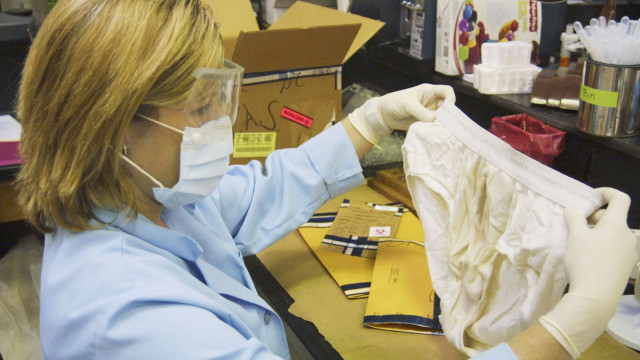Newly
Studied Particle:
'The
Poop Particle'
 |
| Coliform colonies growing on nutrient rich purple agar |
Ever
wonder what types of toxic gases one releases when they lift a cheek
and beef? We're told that commonly released flatulence
consists of about 59% nitrogen, 21% hydrogen, 9% carbon dioxide, 7%
methane and 4% oxygen. The rest of the fart consists of hydrogen
sulfide and mercaptans which gives it that rich, bold aroma. Nothing
toxic in moderate doses although I am sure your Aunt Sally will tell
you that your Uncle Sal almost suffocated her under their bedroom
sheets.
So
since the dangers associated with flatulence are largely limited to
unpleasant odors and sleeping under the same set of sheets as your
Uncle Sal, we have nothing to worry about...
or...
do... we... ???
You
ever heard of a shart? For those who haven't, a shart is simply a
sh*t-fart. When you think your going to fart, but you end up
sh*tting yourself. Now the truth is that every fart is actually a
shart to some extent whereas the erupting gases expel little pieces
of poop which are usually filtered out by your underwear. Depending
on the frequency of flatulence, one may soil themselves quite badly
throughout the day without ever knowing it.
Armed
with this insight, a semester long study was held at Rudgers University in order to determine
the quantity of poop particles expelled from the anus in any given
occurrence of flatulence. To
do this, farts were measured by size, shape, color, and chemical
composition. Volunteers of all sexes, ages, and ethnicities took
turns ripping ass into a newly designed and patent pending device
designed specifically for catching and encapsulating farts. The
inventor of this machine, Ms. Wendy Hinds, Director of “Project
Back Draft” explains that this device was originally used in a
study conducted on cows at a cattle ranch in Southern Texas. The
machine was then re-purposed and greatly modified to fit humans.
Wendy says: “Well, you've got to understand that my original design
was tailored to fit a cow”. Wendy goes on to say that it was
incredibly challenging trying to fit these on people and the
participants felt very silly wearing them. After several weeks
of engineering, a simplified model emerged and science worthy data
began to be collected.
The
methodology for the testing criteria involved filtering the
flatulence through approximately 100 mL of pure, reverse osmosis
filtered water. The water was then tested using membrane filtration
techniques and set on an incubated petri dish of nutrient rich agar
for 6-24 hours depending on the type of bacteria parameters tested
for. Because the amount of particles were found to be way above the
testable limit, dilution was required to accurately gauge the amount
of poop particles and subsequent total coliform colonies which arise.
This was accomplished by pipetting approximately 5 mL of the 100 mL
of flatulence water and then testing via membrane filtration
techniques. The results of this study were then averaged and
reapplied to the average standardized flatulence episode parameters.
It
was determined through this rigorous study that the average fart
contains nearly 800,000 micro-sized particles of poop. An amount
which clearly exceeds the permissible exposure limits of Aunt Sally.
Furthermore, it is very possible that persons exposed to regular
flatulence may become ill from E.Coli.
 |
| Ms. Hinds examines a participants underwear before sampling |
A
follow up study was then conducted with the collection of hundreds of
freshly used underwear where a clipping of the fabric was performed
from the skid stained anus housing region and then tested for its
leeching properties. This study has gained support from OSHA and the
Department of Labor (DOL) as the leeching of fecal matter has a great
potential for being transferred to professionals such as dry cleaners
as well as other cross contamination risks. A key step in
understanding farts and accounting for many variables which had to be
considered in determination of the quantity of fecal matter released
in the atmosphere such as that which was caught as well as portions of
farts that were not caught by the various fabrics used to manufacture
underwear. Although Ms. Hinds is not yet ready to release her follow up data, she insists that proper precautions be taken by both the 'Farter' and the 'Fartie'.
So
next time you're letting loose and people run away in disgust, know
that you've crop dusted a wide radial perimeter with poop particles
and folks have good reason to want to avoid contact.
Where
else may you come in contact with air borne poop particles?
 |
| The answer, my friend, is blowing in the wind |
No comments:
Post a Comment